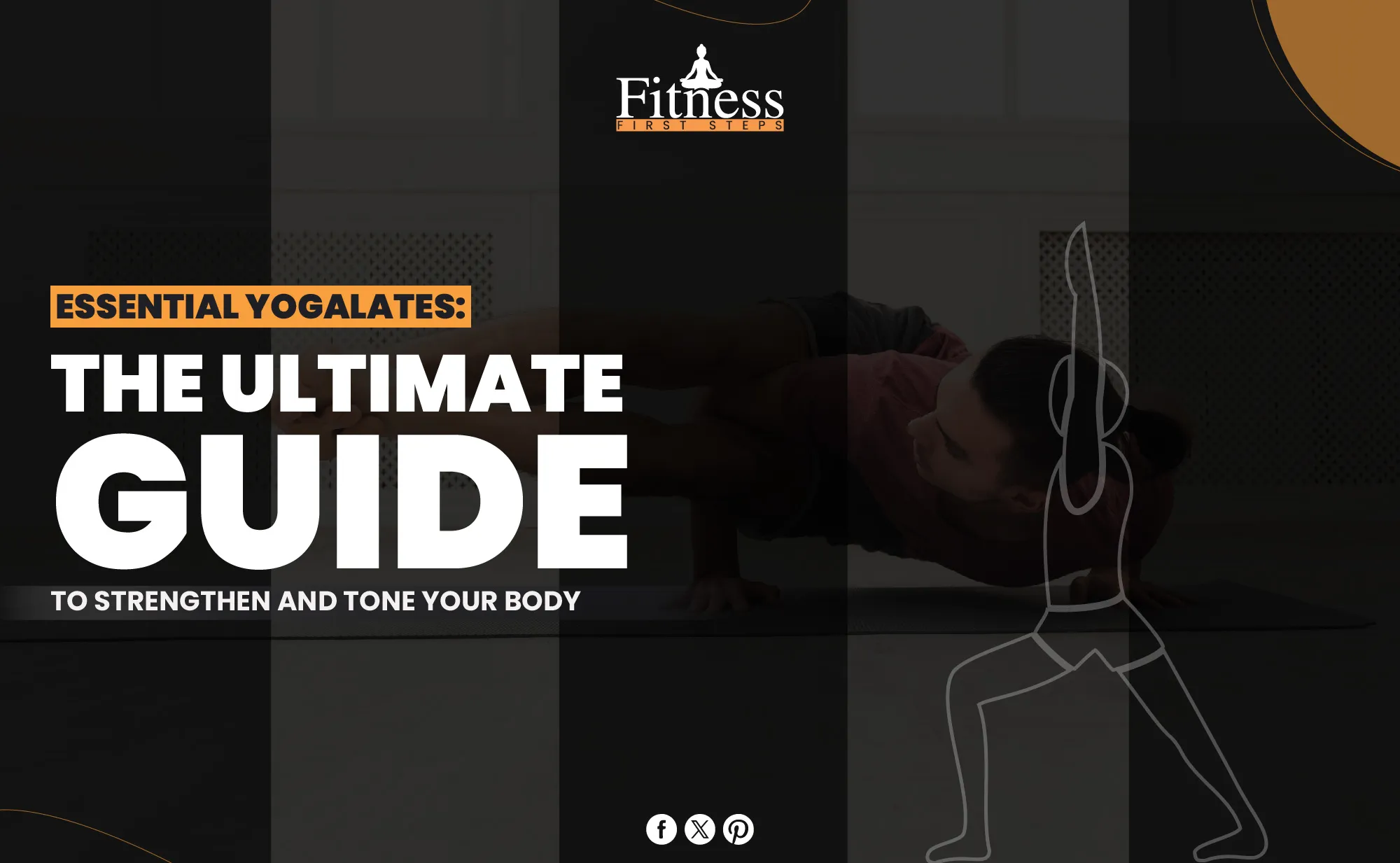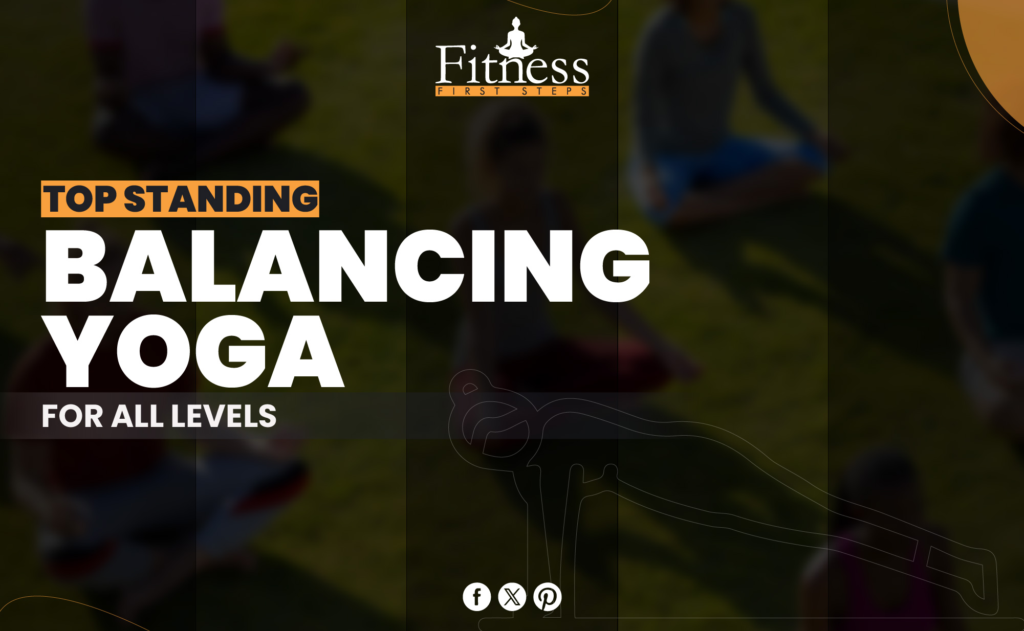Introduction
Mindful Yoga Therapy integrates mindfulness and yoga. This therapeutic practice emphasizes the present moment and encourages practitioners to accept their thoughts, feelings, and bodily sensations to improve mental, physical, and emotional health. Mindful yoga treatment manages stress, anxiety, and other mental health issues by integrating yoga asanas with mindfulness meditation.
The mind, body, and spirit are interrelated. Therefore, holistic well-being recognizes this. Traditional treatments focus on symptom reduction rather than fundamental imbalances that cause illness. On the other hand, mindful yoga therapy fosters healing across all parts of an individual by addressing physical discomfort, emotional misery, and mental conflict together. This complete approach promotes inner peace and wellness.
This blog discusses how mindful yoga therapy promotes holistic well-being through mindfulness techniques. Mindful yoga therapy opens doors to healing, self-discovery, and inner balance, making it a valuable practice for anybody trying to improve health and well-being.
Understanding Mindful Yoga Therapy
Definition of Yoga Therapy and Its Goal of Holistic Healing
Yoga therapy is a customized strategy that promotes health and well-being via physical postures, breathing exercises, meditation, and philosophy. Instead of just exercising, yoga therapy sessions address specific health conditions to promote holistic healing. Yoga therapy unites the body, mind, and spirit to improve health and reduce stress. Mindful yoga therapy adds mindfulness activities to deepen the therapeutic connection with the present.
Explanation of Mindfulness as a Core Component of Yoga Therapy
Mindfulness, or being present without judgment, is central to mindful yoga therapy. It elevates yoga therapy from physical to holistic health. Focused breathing and meditation let people observe their thoughts and feelings without attachment, increasing mental clarity and emotional equilibrium. Mindful yoga therapy is helpful for healing and self-discovery because of the increased awareness it fosters.
How Mindful Yoga Therapy Encompasses Physical, Mental, and Emotional Aspects of Well-Being
Mindful Yoga Therapy promotes holistic wellness by integrating physical postures, conscious breathing, and contemplative techniques. These main points demonstrate how this therapy approach covers physical, mental, and emotional dimensions:
- Physical Health: Mindful yoga therapy promotes flexibility, muscle strength, and body functioning through specific yoga asanas. These physical benefits improve quality of life and well-being.
- Mental Clarity: Mindfulness and meditation in yoga therapy help people control their thoughts and emotions, promoting mental clarity. Staying present and focused reduces stress and worry for practitioners.
- Emotional Balance: Mindful yoga therapy helps people process and release emotional barriers by fostering openness and nonjudgment. Accepting and comprehending one’s emotions promotes emotional stability.
- Stress Reduction: Mindfulness techniques and physical action have been shown to help reduce stress. Participants’ cortisol levels drop, making them feel calmer and more relaxed.
- Increased Self-awareness: Being more self-aware grows when you do mindful yoga and focus on the present moment. Better self-reflection helps people make better decisions and grows them as people.
Combining these points shows how mindful yoga therapy can help the body, mind, and spirit, resulting in a more balanced and happy life.
The Principles of Mindful Yoga Therapy
The basic ideas behind mindful yoga therapy are what it does. It focuses on healing and well-being through a conscious approach to yoga. These rules ensure that the practice isn’t just about physical health but about healing in a whole way.
Cultivating Present-Moment Awareness through Breath and Body
This approach involves being fully present and linked through breath and physical feelings. Mindful yoga therapy focuses on breathing and body sensations during asanas. This attention to breath and body improves physical alignment, breath control, mental focus, and stress loss.
Practicing Non-Judgmental Acceptance of Thoughts and Emotions
Mindful yoga helps people examine their emotions without judgment. Its open and accepting nature lets practitioners acknowledge their feelings without overidentifying or denying them. Recognizing transient emotions and thoughts fosters a caring, healing environment.
Fostering Compassion and Self-Care in the Healing Journey
Mindful yoga therapy emphasizes compassion and self-care. This principle encourages self-compassion, especially when facing difficulties. Self-care and compassion boost resilience and life skills.
Integrating Mindfulness into Yoga Postures
Mindful yoga treatment incorporates attention into postures, breathwork, and meditation. This integration keeps consciousness flowing throughout the practice, developing a mind-body-spirit connection. Traditional yoga poses become potent mindfulness tools, improving each session’s therapeutic benefits.
Techniques and Practices in Mindful Yoga Therapy
Mindful yoga treatment promotes relaxation, strength, flexibility, mindfulness, and inner peace through various modalities. Integrating these activities throughout daily life improves physical, mental, and emotional health.
Mindful Breathing Exercises for Relaxation and Stress Reduction
Pranayama breathing techniques strengthen the mind-body connection in mindful yoga therapy. They are designed to relax, relieve stress, and improve health. Summary of conscious breathing exercises:
- Focused Breathing: Focusing on the breath calms the mind and reduces tension. Practitioners might find serenity and clarity by focusing on inhaling and exhalation.
- Deep Breathing: Deep breathing exercises boost oxygen exchange, lower heart rate, and stabilize blood pressure, making them practical stress management tools.
- Equal Breathing: Equal breathing helps balance the autonomic nervous system by simultaneously making you breathe in and out. This calms both the mind and the body.
- Abdominal Breathing: When you focus on deep abdominal breathing, the parasympathetic nervous system is activated. This helps lessen the effects of worry and anxiety on your body.
Daily breathing exercises can help them deal with stress better and improve their general health and mindfulness.
Gentle Yoga Postures to Promote Flexibility and Strength
Mindful yoga therapy emphasizes gentle, deep stretching. The postures promote flexibility, strength, and mind-body awareness without strain or injury and are suitable for all levels. Key points regarding mindful yoga therapy and gentle yoga postures:
- Cat-Cow Stretch: This slow transition between two poses helps warm up the spine and ease tightness in the back and neck. It also makes the spine more flexible and more aware of your breath.
- Child’s Pose: This is a healing and relaxing pose that lets you take a moment to think and breathe. Slowly stretching the hips, thighs, and ankles has a calming effect on the mind and body.
- Seated Forward Bend: vIn this pose, the back and legs are stretched. It also calms the mind and lowers stress. Deep breathing helps you relax and think clearly.
- Legs-Up-The-Wall Pose: People know that this pose can calm the nervous system. It also gently stretches the hamstrings and lower back, improves circulation, and eases mild stress and strain.
- Mountain Pose with Deep Breathing: In this basic pose, standing firmly and breathing deeply can help you feel grounded, stable, and aware of the present moment. You can practice awareness while standing this way, which works well.
A daily mindful yoga therapy practice that includes these mild yoga poses improves physical health by increasing flexibility and strength and mental and emotional health by reducing stress and increasing mindfulness.
Meditation Practices to Cultivate Mindfulness and Inner Peace
It is critical to mindful yoga therapy, enabling methods to enhance awareness, inner serenity, and self-connection. Meditation techniques in mindful yoga therapy include:
- Mindfulness Meditation: This type of meditation fosters conscious awareness and presence. People can settle down and gain clarity by observing thoughts, feelings, and sensations without judgment.
- Loving-Kindness Meditation: This practice, sometimes called Metta meditation, involves loving and caring for oneself and others. It promotes empathy, reduces negative emotions, and improves well-being.
- Body Scan Meditation: This technique involves mentally scanning and releasing physical tightness. It increases bodily feeling awareness and can reduce stress and relaxation.
- Breath Awareness Meditation: This breath-only technique helps anchor the mind in the present, reducing stress, improving concentration, and balancing emotions.
- Guided Imagery: Guided imagery is a way to relax that involves picturing calm scenes or situations. It can help lower stress and increase calmness.
Adding these meditation techniques to mindful yoga therapy can improve mental and emotional health, bringing serenity, resilience, and mindfulness to daily life.
Yoga Nidra (Guided Relaxation) for Deep Relaxation and Healing
This yoga, often known as “yogic sleep,” is a guided relaxation practice that promotes physical, mental, and emotional healing. Yoga Nidra essentials:
- Intention Setting: In Yoga Nidra, participants set a personal goal or Sankalpa at the start of the session to help them grow and become more conscious.
- Body Sensation Awareness: People are led through a systematic scan of their bodies and told to note their feelings without attaching to them. This helps them reach a deep state of relaxation and awareness.
- Breath Awareness: Focusing on the breath can help calm the mind and make you feel more relaxed, which can lead you to your subconscious or unconscious mind.
- Visualization: Yoga Nidra’s guided imagery can range from tranquil landscapes to body excursions. This technique boosts creativity, stress reduction, and emotional healing.
- Layered Deepening: Participants are led into deeper levels of relaxation and often reach a state between sleep and waking where they can heal profoundly and learn more about themselves.
- Reintegration and Closing: As people slowly wake up, they are often asked to remember the goal they set at the start of the session. This gives them time to think about the practice and make it a part of their lives.
Yoga Nidra is suitable for people of all ages and skills, but it can be beneficial for people who want to reduce stress, relax deeply, and heal on a deep level.
Mindful Movement Practices for Embodied Awareness and Self-Expression
Mindful movement techniques combine physical exertion with mental peace, promoting physical and emotional health. Critical tips for mindful movement to improve awareness and self-expression in mindful yoga therapy:
- Tai Chi is an ancient martial art with health and meditative advantages. Slow, focused movements improve balance, coordination, and serenity.
- Qigong: Qigong is a technique similar to Tai Chi. It combines controlled breathing, rhythmic movement, and meditation to improve health and energy.
- Walking Meditation: This technique entails walking slowly and deliberately, focusing on the present and body sensations. It is a simple but meaningful method for practicing mindfulness and connecting with nature.
- Dance Therapy helps people express themselves through dance and movement. It can be healing and fun, allowing you to let go of your feelings and connect with yourself more deeply.
- Gentle Stretching: Focusing on mindful breathing and body feelings while stretching exercises can make you more flexible and relieve tension, making you feel better overall.
Adding these activities to your daily life can help you feel more connected to your body, keep your emotions in check, and improve your general health and wellness.
Applications of Mindful Yoga Therapy
Mindful yoga therapy examines health from all angles and can be helpful in many therapeutic and professional settings. It can help with physical, mental, and social health problems.
Supporting individuals with trauma, PTSD, or stress-related disorders
Mindful yoga therapy helps trauma, PTSD, and stress sufferers. Creating a secure space for body and mind exploration helps people manage their emotions and stress. Conscious breathing and gentle yoga poses assist in establishing trauma-coping techniques and speed recovery.
Managing chronic pain and improving physical well-being
For chronic pain, mindful yoga therapy uses mindfulness and movement to relieve pain. By changing attention and developing pain coping mechanisms, mindfulness, and meditation lessen pain intensity. Gentle yoga postures strengthen and stretch the body. Holistic treatment treats physical ailments and promotes well-being.
Enhancing emotional resilience and mental health
Mindful yoga boosts mental health and emotional resiliency. Mindfulness, yoga, and meditation improve emotional control, anxiety, sadness, and self-esteem. Regular practice improves mood, emotional stability, and discomfort tolerance.
Complementing traditional medical treatments in integrative healthcare settings
Mindful yoga therapy complements established medical therapies in integrative healthcare. Integrating it with conventional care gives patients a more comprehensive approach that covers physical, psychological, and emotional requirements. Mindful yoga therapy may improve quality of life, lessen medical side effects, and speed healing in patients with many health issues.
Benefits of Mindful Yoga Therapy
The comprehensive aspect of mindful yoga therapy improves the body, mind, and soul. These benefits make life more balanced and fulfilling.
Physical Benefits Of Mindful Yoga Therapy
- Enhanced Flexibility and Mobility: Regular mindful yoga therapy strengthens and stretches muscles, improving flexibility and range of motion. This can reduce physical pain and improve daily functioning.
- Improved Posture and Core Strength: Mindful yoga therapy strengthens core muscles, which sustain posture. Slouching and misalignment generate spinal stress and pain, which better posture minimizes.
- Increased Circulation and Heart Health: Yoga can improve circulation, bringing oxygen to the body’s cells. Exercise can also lower blood pressure and heart rate for healthier hearts and blood vessels.
- Enhanced Respiratory Efficiency: Pranayama (breathwork) is essential to yoga treatment. It helps the lungs work better and makes breathing easier. This can help people with breathing problems and give them more energy.
- Stress Reduction: Mindfulness and meditation are essential parts of yoga treatment that can help you deal with stress, lower your cortisol levels, and ease the symptoms of stress and anxiety.
Mental Benefits of Mindful Yoga Therapy
- Enhanced Concentration and Focus: Meditation and concentrated breathing promote focus and clarity in yoga therapy. Creating a quiet, centered mind helps improve focus and eliminate cognitive distractions.
- Improved Sleep Quality: Regular mindful yoga therapy improves sleep quality and patterns. Gentle yoga and meditation reduce insomnia and promote restful sleep.
- Increased Self-Awareness and Mindfulness: Mindful yoga therapy promotes self-awareness. This increased awareness of body, mind, and emotions helps people comprehend their thoughts, behaviors, and stress responses, leading to healthier coping techniques.
- Reduced Symptoms of Anxiety and Depression: Depression and anxiety are reduced with mindful yoga treatment. Holistic activities like mindfulness, breathing, and physical postures can change brain chemicals that regulate mood, boosting emotional well-being.
- Support for Cognitive Functioning in Aging: Yoga and mindfulness may improve cognitive health, especially in older adults. They can improve memory, executive function, and cognitive function.
Emotional Benefits of Mindful Yoga Therapy
- Fosters Emotional Balance: Mindful yoga therapy helps maintain emotional balance by teaching emotional management. Even in difficult situations, regular practice helps people stay calm.
- Enhances Self-Compassion: Many people learn to be kind and understanding to themselves by practicing yoga and being aware. This makes them more compassionate with themselves and less likely to talk badly to themselves.
- Increases Resilience to Emotional Stress: Mindful yoga practice makes people more emotionally intense and helps them handle challenging situations calmer and less angry.
- Promotes Positive Outlook: Using body and mind habits together can help you have a better attitude, making you happier and more content.
- Supports Emotional Release: Mindful yoga creates a safe space for letting go of bottled-up emotions. Physical movement and breathwork help with healing and mental cleansing.
Spiritual Benefits of Mindful Yoga Therapy
- Deepens Connection to Self: Mindful yoga therapy helps people connect more deeply with their inner selves, which can lead to a sense of peace and self-acceptance.
- Enhances Spiritual Awareness: Regular practice can help people become more spiritually aware and feel part of something bigger than themselves, giving them a deep sense of meaning and fulfillment.
- Cultivates Mindfulness: Mindful yoga practices help you become more aware of the present moment, which can help you in your daily life and improve your mental health.
- Promotes Inner Peace: Mindful yoga can help people feel calm and peaceful inside, leading to a lasting feeling of inner peace and helping them keep their minds and spirits calm.
- Supports the Journey of Self-Discovery: Meditation and mindful yoga therapy can be beneficial in self-discovery, helping people find their real potential and the core of who they are.
Conclusion
The underlying ideas and procedures of mindful yoga therapy have been revealed, highlighting its significance in holistic wellness. Focusing on mindfulness in yoga therapy harmonizes physical, mental, emotional, and spiritual well-being. Gentle yoga and meditation can build resilience, manage stress, and increase self-awareness. The advantages of yoga transcend beyond the mat, improving flexibility, strength, emotional stability, and a deep connection to the present.
Mindfulness in yoga therapy shifts well-being towards introspection and healing. Our well-being is diverse and requires a balance that mindful yoga therapy delivers. This practice is a holistic journey to inner calm, resilience, and self-understanding, not just physical wellness. As we conclude, let’s use the insights and practices to live a more aware, healthy, and harmonious life.




